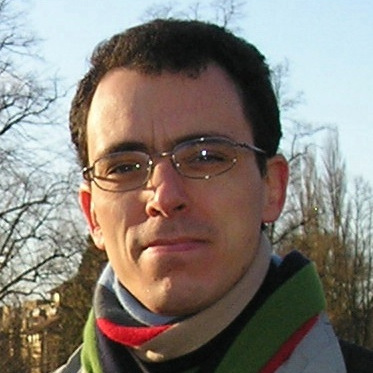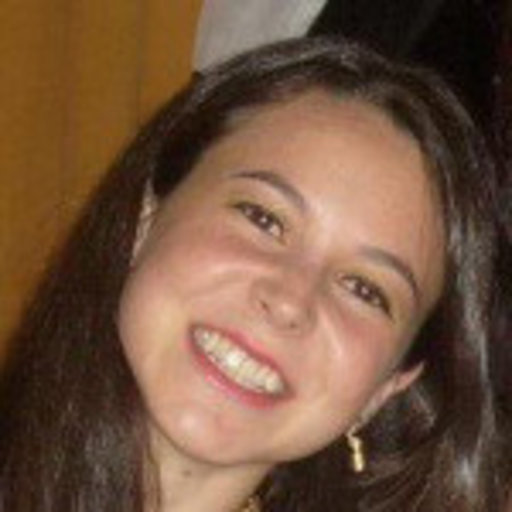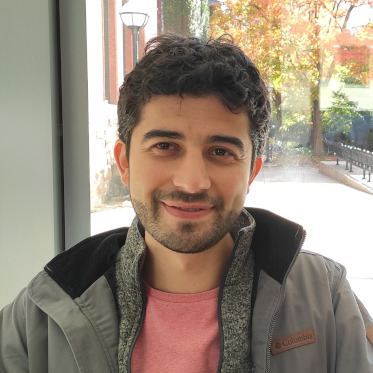Winter school
The school is aimed at undergraduate, PhD-students and researchers interested in classical analysis, orthogonal polynomials, harmonic analysis and their applications. The topics of the school require a basic knowledge of real and complex analysis, group theory and linear algebra. The school consists of four courses by leading experts in their field.
Lecturers

Alfredo Deaño
Universidad Carlos III
Spain

Rocío Díaz Martín
Vanderbilt University
USA.


Schedule
Classes will take place in: Aula 16.
| Time | Monday | Tuesday | Wednesday | Thursday | Friday |
|---|---|---|---|---|---|
| 9:30-10:00 | Coffee | Coffee | Coffee | Coffee | |
| 10:00-11:00 | Alfredo Deaño (A16) | Alfredo Deaño (A16) | Rocío Díaz (A16) | Rocío Díaz (A16) | |
| 11:00-12:00 | Guilherme Silva (A16) | Guilherme Silva (A16) | Erik Koelink (A16) | Erik Koelink (A16) | |
| 14:00-15:00 | Alfredo Deaño (A16) | Alfredo Deaño (A16) | Rocío Díaz (A16) | Rocío Díaz (A16) | |
| 15:00-16:00 | Guilherme Silva (A16) | Guilherme Silva (A16) | Erik Koelink (A16) | Erik Koelink (A16) |
Lectures
-
Asymptotic methods for special functions and applications
Alfredo Deaño
Asymptotic analysis is an essential tool in the study of special functions of Mathematical Physics. For classical examples such as Airy, Bessel or hypergeometric functions, there exist classical methods based on integral representations, both on the real line and in the complex plane. These include Laplace’s method, stationary phase and steepest descent. In this course we will give an overview of the ideas behind these methods, and how they can be applied to obtain asymptotic approximations for special functions. Apart from integral representations, other identities that can be used in the asymptotic analysis of special functions include differential equations, recurrence relations and more recently, the Riemann-Hilbert formulation. Time permitting, we will illustrate recent applications of this methodology to obtain asymptotics of orthogonal polynomials and related quantities that are relevant in areas such as random matrix theory. Background:- Real and complex analysis (power series methods for ODEs, contour integrals, residue theorem). Major goals:
- Lecture 1: Basic concepts of asymptotics, convergent vs. divergent series. Integral representations for special functions.
- Lecture 2: Laplace's method and extensions. Stationary phase.
- Lecture 3: Classical method of steepest descent.
- Lecture 4: Other methods.
-
Spherical functions of positive type: The core of the Plancherel measure
Rocío Díaz
This mini-course in harmonic analysis aims to generalize the classical Fourier transform on the real line to other domains, such as abelian groups, compact groups, and homogeneous spaces, with a particular focus on characterizing the Plancherel measure necessary for the Inversion Theorem. In order to provide some insights on how to extend the classical Fourier analysis, we will start by introducing the Gelfand transform on convolution algebras of functions. Gelfand's theory will endow us with the notion of spectrum, which will be treated as the space of frequencies in the classical Fourier analysis.
Our main goal is to obtain an inversion formula that allows us to recover signals by knowing their frequencies. When inverting, essentially, we "add'' all the frequency components of a function, and so a measure is needed: the Plancherel measure.
We will be particularly interested in characterizing the support of the Plancherel measure. The Plancherel measure is a measure on the spectrum, and as this will be defined as a space of functions, the support of the Plancherel measure will be a functional space: that of the spherical functions of positive type.
We will cover the following program: First, inspired by the definition of positive-definite matrices, we will introduce the notion of functions of positive-type on groups. We will analyze abelian and non-abelian groups. For abelian ones, the characters (bounded homomorphisms) are examples of positive-type functions. Moreover, thanks to Bochner's Theorem, every function of positive type on an abelian group is a generalized linear combination with positive coefficients of characters of the group. We will use this result to prove inversion formulas and the Plancherel Theorem. Finally, the context of Gelfand pairs will enable us to tackle the non-abelian scenario. Here, the notion of spherical functions will be used to extend the Fourier transform, Bochner's, Inversion, and Plancherel theorems. The Plancherel measure turns out to be concentrated on the portion of the spectrum given by the spherical functions of positive type. We will explore as many examples as time permits.
-
Commutative triples in group representations and special functions
Erik Koelink:
There is an intimate relation between representation theory of groups on the one hand and orthogonal polynomials and special functions on the other hand. This relation goes back to the middle part of the 20th century in the works of a.o. Bargmann, Gelfand and it had applications in mathematical physics, such as in the works of Wigner. In these lectures we start with some well-known classical results on orthogonal polynomials associated to the compact group $\mathrm{SU}(2)$, and these polynomials are of hypergeometric type such as the Jacobi polynomials and various subclasses. We discuss the dictionary of properties in representations of compact groups and properties for these subclasses.
As a next step we discuss more general pairs $(G,K)$ of a suitable group $G$ with a compact subgroup $K$. The space of bi-$K$-invariant integrable functions is an algebra with respect to the convolution product. If this algebra is commutative, we call $(G,K)$ a Gelfand pair. The characters of this commutative algebra are interesting special functions known as spherical functions. The spherical functions satisfy product formulas, (generalised) orthogonality properties, etc. We rephrase some of the results of the first part on $\mathrm{SU}(2)$ in this context.
The generalisation of a Gelfand pair is a commutative triples $(G,K,\tau)$, where $\tau$ is a finite-dimensional irreducible representation of $K$. In this case the convolution algebra consists of matrix valued functions on $G$ that behave well under the left and right action of $K$ via the representation $\tau$ of $K$. If the convolution algebra is commutative, the triple $(G,K,\tau)$ is a commutative triple (also sometimes a Gelfand triple). The characters are expressible in terms of matrix valued spherical functions, which can be connected to matrix orthogonal polynomials in various case with compact groups $G$. We discuss some explicit examples, and, if time permits, an example of multivariable matrix orthogonal polynomials.
Lecture notes Related material -
Point processes and orthogonal polynomials
Guilherme Silva
Although the theory of random point processes is somewhat classical, with origins rooting back to centuries ago, in recent times there has been a tremendous development on the analysis of some of its fundamental models. Many of these developments are based or inspired in the analysis of random matrix theory. In this course, we survey different interplays between random particle systems and orthogonal polynomials, and in particular how the asymptotic analysis of the latter plays a fundamental role in the description of interesting quantities on random matrix theory. Background: - Basics in probability. - For the second half: basics in functional analysis: operators on L2 spaces Major goals:
- Lecture 1: Give a survey of some particle systems that are "solved" using OPs.
- Lecture 1 and 2: explain how eigenvalue distribution of invariant matrix models relate to OPs.
- Lecture 3: Assuming asymptotic formulas for OPs, show how they yield some universality results.
- Lecture 4: Explain how deformations (conditional thinning) of eigenvalues of random matrices connect to deformations of OPs, and how universality is broken/improved.
Workshop
The workshop will focus on the interaction between special functions, orthogonal polynomials, special functions with harmonic analysis and mathematical physiscs.
Schedule:
| Time | Wednesday |
|---|---|
| 14:00-14:30 | Inés Pacharoni - TBA |
| 14:30-15:00 | Ignacio Bono Parisi - Singular examples of the Matrix Bochner Problem. |
| 15:00-15:30 | Raul Vidal - Explicit fundamental solution for the operator L + α|T| on the Gelfand pair (Hn, U(n)). |
| 15:30-16:30 | Coffee break |
| 16:30-17:00 | Lucía Morey - Non Abelian Toda-Type Equations and MVOPs |
| 17:00-17:30 | Victoria Torres - The Bochner problem for a confluent-type operator |
| 17:30-18:00 | Guillermo Flores - A Calderón theorem for the poisson semigroups associated with the Ornstein–Uhlenbeck and Hermite operators |
| 18:00-18:30 | Andrea Gallo - Pares de Gelfand clásicos en grupos de Lie nilpotentes |
Registration
Registration is free. For organization reasons we encourage all interested participants to fill the following form.
Register Now